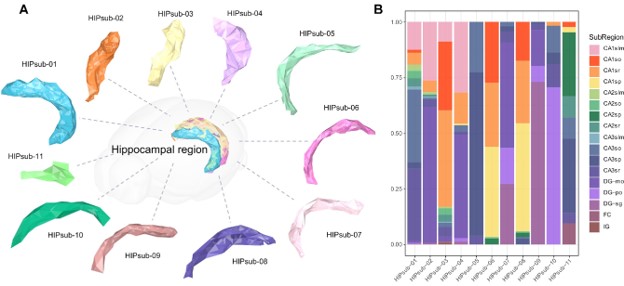A research team from the Bio-Med Big Data Center, Shanghai Institute of Nutrition and Health (SINH) of Chinese Academy of Sciences, and their collaborators developed a Spatial Multimodal Data Browser (SMDB, https://www.biosino.org/smdb/).
Entitled “SMDB: a Spatial Multimodal Data Browser”, this study was published in Nucleic Acids Research on May 22, 2023.
SMDB is an essential tool that facilitates the exploration and understanding of spatial transcriptomics (ST) data in a comprehensive and interactive way. With its multimodal integration and customisable workspaces, it provides researchers with a powerful and versatile platform for investigating the complex relationship between spatial data and biological function.
High-resolution spatial transcriptomics has improved the understanding of tissue organization. It has led to breakthroughs in neuroscience, developmental biology, and disease research. To fully understand biological functions reflected in the transcriptional state, knowledge about morphological context simultaneous was needed. Existing tools visualize gene expression in 2D slices or create static 3D views. However, traversing multiple slices simultaneously is difficult. Interactive exploration of molecular features and cell types in 3D remains a challenge.
The SMDB supports the visualization of spatial multimodal data in both 2D and 3D. In 2D, it enables segmentation of slices and identification of gene expression boundaries. Researchers can analyze tissue composition using loaded images and molecular clusters. In 3D, researchers can filter spots according to their needs, and reconstruct morphological visualizations. SMDB offers customizable workspaces for interactive exploration.
Notably, the SMDB includes the pre-loaded Allen Mouse Brain Common Coordinate Framework (CCFv3) from the Allen Institute in US. It provides a quick reference for studying the mouse brain.
"SMDB is a comprehensive solution for studying spatial morphology and biological function," Said Prof. ZHANG Guoqing, corresponding author of this article, "It helps researchers explore multimodal ST data."

3D reconstruction of Hippocampal subregions in SMDB. (Image provided by Prof. ZHANG’s team)
Media Contact:
WANG Jin
Shanghai Institute of Nutrition and Health,
Chinese Academy of Sciences
Email: wangjin01@sinh.ac.cn
Web: http://english.sinh.cas.cn/ 
